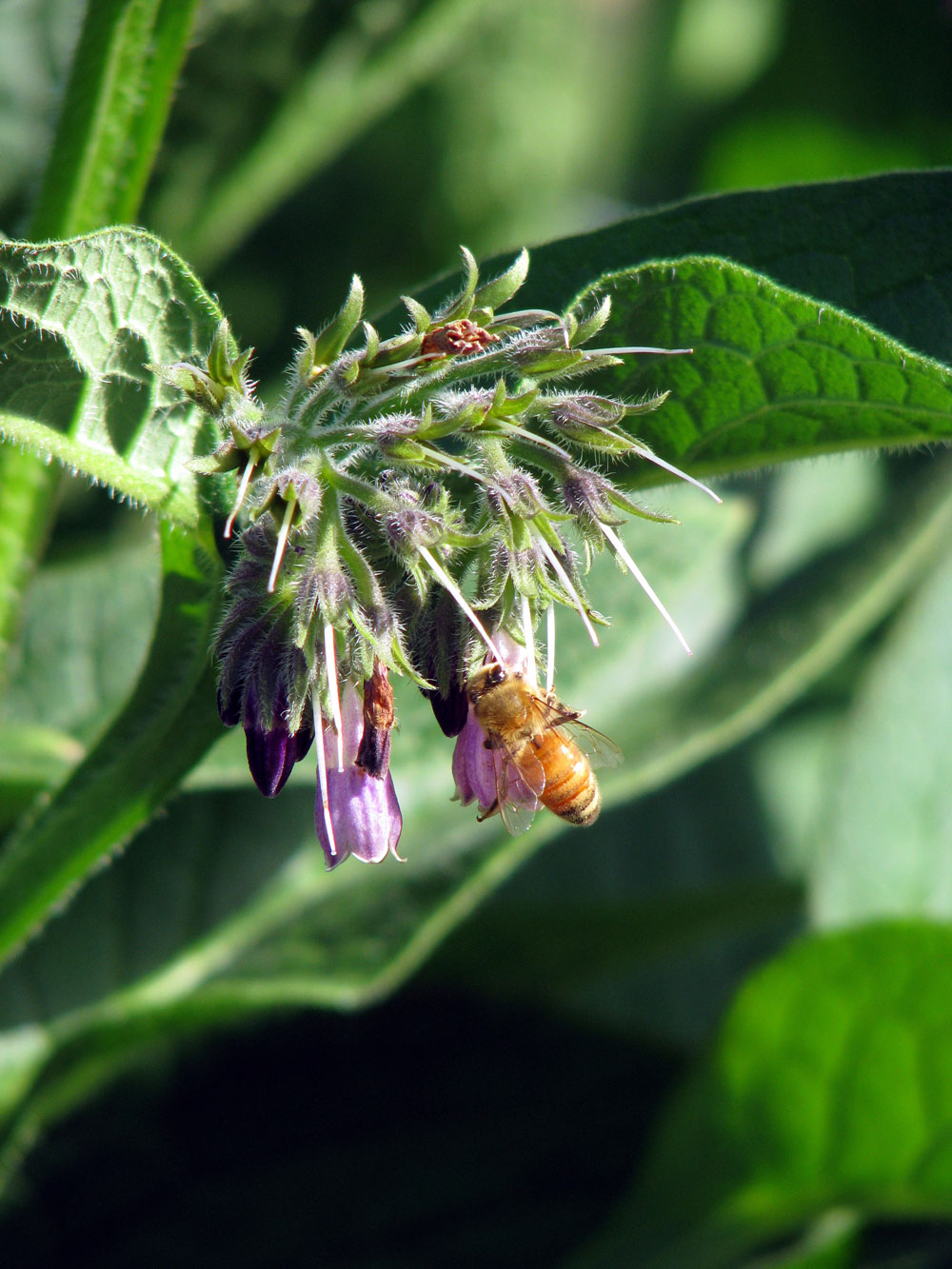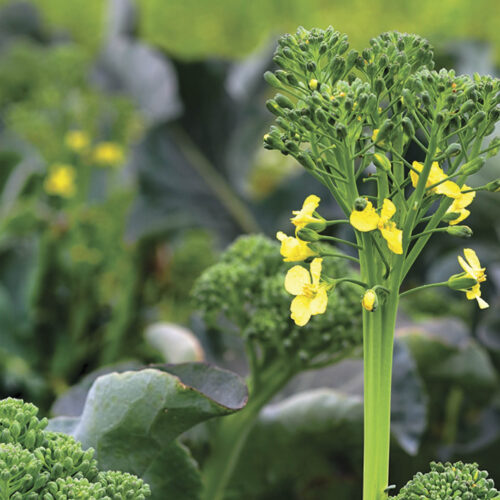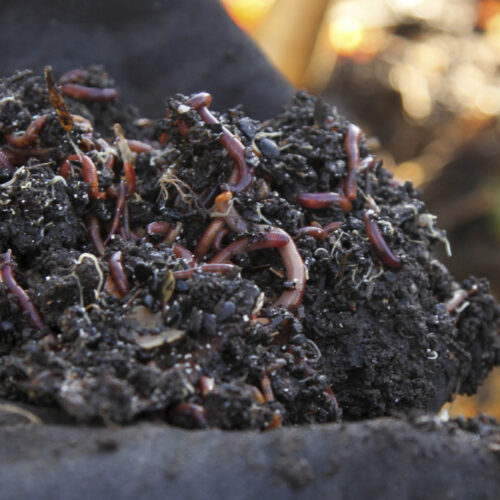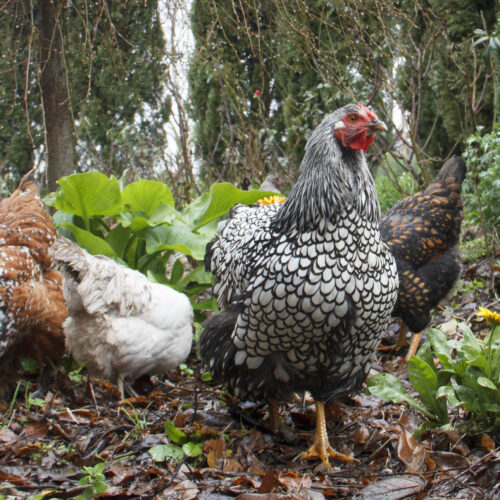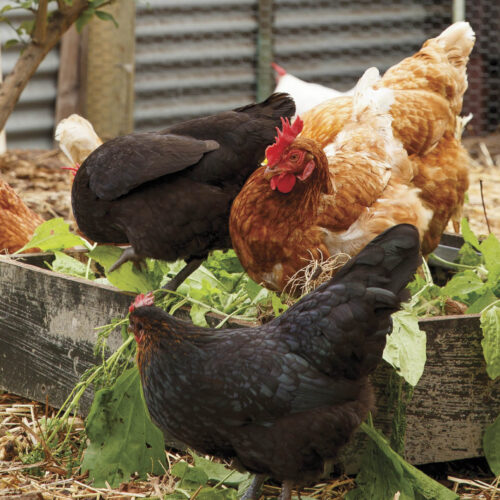Backyard beekeeping
2009-12-17T03:59:15+11:00
Taking on backyard beekeeping has been a steep learning curve for Linda Cockburn, but it's another satisfying step towards self-reliance.
There are more than 1500 species of native bees in Australia, with the majority choosing a solitary existence over that of a colony. This means they are unsuitable for hiving (see below). In contrast, the European Honeybee (Apis mellifera) is ideally suited, hence the somewhat controversial introduction of eight hives to Sydney in 1822.
Pollinating crops and the production of honey is an estimated $2 billion a year industry in Australia. So you might think all was well. But as in many other areas of the world, it’s an industry in decline. Our beekeepers are retiring and there are few young beekeepers replacing them. Vital skills are being lost.
Another potential threat to the industry is the varroa mite which has caused a 25 per cent decline in the number of hives worldwide. The North Island of New Zealand was claimed by the mite in 2000 and four years later it crossed the Cook Strait.
This all means there is a strong incentive for gardeners to support healthy bee populations by keeping a hive. This is especially so when you consider that one out of every three mouthfuls of food we eat can be linked to the work of bees. If their numbers decline too much, it may jeopardise crop pollination.
Starting out
If you’re thinking of getting into beekeeping, a good first step is joining a local bee association. It’s a great way to test your mettle and see if you are cut out for dealing with thousands of bees. They’ll also provide advice about your local and seasonal pollen sources, where to get beekeeping supplies, and provide assistance with getting you started with your first hive or ‘nuc’. There are many advantages to beekeeping. For a start, you will:
- Increase pollination in your garden and local area.
- Have your own supply of honey (and beeswax) that is also valuable in neighbourhood bartering.
- Help keep a valuable skill alive.
- Increase your self-reliance.
- Help to increase the number of thriving beehives in the country.
- Gain a natural inoculation for hayfever.
The neighbours
Urban beekeeping is legal but care must be taken not to provoke your neighbours. Even a small garden can have a beehive, as the bees will ‘jump the fence’ and source pollen from well beyond your boundaries. However, think about your bees’ flight path and place the hive in a spot that will not get you into trouble. For instance, you don’t want them heading out across a neighbour’s driveway. Bees establish flight paths as they leave and return to the hive, so you can help direct them away from problem areas. Siting the hive near a fence, shed or tall perennial plant will help direct them up and away.
Be diligent about providing the bees sufficient room to expand in the hive, otherwise you risk a swarm. Also, provide a close source of water as bees need a dependable supply. Otherwise they might take a swim en masse in a neighbour’s pool. Apart from making the neighbours mad, the bees will drown.
One of the most frequent neighbour complaints is bee poo. Yes, sounds odd, but they save it up till they leave the hive and then void. My bee suit is speckled with brown faeces. While some beekeepers swear it’s good ‘manure’, your neighbours may not be so pleased. To keep on their good side bribe your neighbours with jars of delicious honey.
Life inside the hive
Before we look at the costs and things you need, here’s a quick overview of how a beehive works. The beehive is a series of stacked boxes, called supers. It’s a bit like a skyscraper for bees, with approximately 60,000 residents.
The entrance and brood chamber
The first box from the ground is the entrance to the hive. This is also the brood chamber where the queen lays the majority of her eggs, around 2000 a day. The larvae of these take 21 days to form into workers (female) or 24 days for drones (male). The larvae can be seen as tiny white grains of rice that slowly grow in size as they feed off nectar at the base of the cell.
Nine days after egg laying, the surrounding worker bees cap the cell with a beige material different from other cell cappings. When development is complete the adult bee chews its way out of the cell and emerges. Within minutes it becomes a part of the seething mass all bent on one grand mission – to make honey.
The food chamber
The next super is the food chamber. The bees are busy for a reason – they need to store enough honey to get them through their inactive winter period when the bees form a huddle around their queen in the centre of the hive and feed off their stores. Any surplus honey in the supers above is for the beekeeper.
Vertical frames
Each super has vertical frames, usually 8 to 10, and of varying sizes, depending on personal choice. Lay foundation wax in the frames and embedded on a series of wires. These frames ‘hang’ inside the box by their top edges. The beekeeper opens the hive by removing the top cover and checks the frames for disease and rotates the supers so the bees are working evenly throughout the hive. The queen is relegated to the bottom two supers otherwise she’ll lay brood throughout the hive making it difficult to extract the honey without including half-formed bees. A queen excluder is a thin metal grid designed to keep queen bees, who have a ‘big bum’, in the lower chambers.
Bees travel a 4 – 5km radius from the hive visiting four million flowers to produce 500gms of honey, each bee visiting around 600 flowers before returning to the hive. A remarkable travel itinerary for each mouthful of honey – which puts a new slant on food miles.
Robbing bees
The beekeeper’s job is to trick the bees into thinking they haven’t produced enough honey. To do this the beekeeper needs to make regular checks of the hive to ensure that there is always more room to expand. Not to do so risks a swarm, where half the hive takes off for roomier accommodation, taking the queen with them. As a beekeeping friend tells me, having a swarm is like owning a hive that’s “like Heathrow Airport one day and Hobart the next”.
Bees have race memories, and despite the absence of bears in Australia, they’re still on the lookout for anything big, dark, woolly, smelly and with a lumbering gait. Hence, beekeepers wear light coloured cotton clothing and shower often. Any time a beekeeper approaches a hive they have a smoker which puffs calming smoke into the hive entrance and between the frames (there are a number of theories about why smoke calms bees, but it does work).
When you are ready to extract honey, place a bee escape board under the top super. This is an ingenious board that allows the bees to leave the super, but makes it difficult for them to find their way back in. 48 hours later the beekeeper takes the vacant super and extracts the honey. I recently bought a bee escape board and my partner, mishearing me, was quick to comment, “You’ve bought them everything already! Why do they need a skateboard?”
There’s lots of expensive gear designed to centrifugally force the honey from the cells, but for the amateur beekeeper, a warm spot and gravity are sufficient to extract 80 per cent. First, you use an uncapping knife or a long sharp knife dipped in boiling water to carefully cut away the cappings. Leave the frame so the honey can slowly drip out. When ready, sieve for stray wings and things and bottle. Making your own honey allows you to sieve it more coarsely than commercial honey and so leave the pollen in it. Ingesting small amounts of local pollen is a natural inoculation for hayfever sufferers. You don’t have to heat-treat honey, which takes away some of the nutritional benefits.
Costs and equipment
There’s lots of bee paraphernalia that you can buy but I suggest you start basic and find what works for you. The initial costs can be high. However, there need not be any further expenditure for many years to come, and with the promise of 60kg or more of honey a year from a well-managed backyard hive, it’s not a bad investment.
On the equipment side, you’ll need:
- A smoker: They come in many varieties.
- Protective gear: This can be $200 or more for the ‘right stuff’, or you can put together your own kit. Get good advice on this. However, you definitely need to buy a veil.
- A hive tool: Essential to prise the frames apart and lift them.
- A bee brush: Anything soft-bristled that’s unlikely to harm the bees.
- Supers and frames: The unassembled supers are cheap at approx $15 to $30 (depending on size), the frames around $1.40 each, the wax about a $1 a sheet.
The stinging truth
Backyard beekeeping is a rewarding hobby but one that comes with a big warning! I’ve developed a nasty reaction to stings – four so far, and all my own fault. Two of them came when my bee suit rode up and I snapped it back down, admitting a cluster of bees that I was unaware were riding piggy back.
The first clue to my error was seeing two bees buzz past my eyes on the wrong side of the suit, followed by a zang on my backside. I’ve played it safe ever since and gone for three layers of clothing. Not everyone reacts badly to bee stings but in rare cases a sting can prove fatal. It’s a hobby that always requires protective gear. If you have a known bee allergy I suggest you give it a miss. Nearly as many people die in Australia from bee stings as from snake bites.
Having covered the bad news, I would highly recommend people add to their self-sufficiency skills by starting a hive. And while you can’t pat, hand feed or throw a bee a ball, a hive has a personality that extends well beyond the six week lifecycle of the average worker bee.
No stings attached
If you like the idea of a beehive in your backyard, but don’t like the idea of attracting a sting or two, try a native hive. Only 10 of the estimated 1500 native bee species are social. These bees have a queen, workers, drones, collect pollen and store it as honey. Their honey tastes tangier than the commercial bees, but you’re not likely to be able to rob them to find out as they are less efficient than the introduced species.
Native bees need all the honey they produce to hive successfully over winter. But they will add interest to your garden, and help support an Australian species. There are a growing number of native bee enthusiasts, who rescue hives from trees felled during forest harvesting. They then sell them on to other enthusiasts. It is best to keep the Trigona stingless native bee species in the warmer areas of QLD, NSW and WA.

